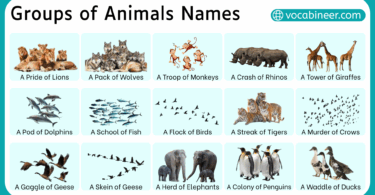Screwdrivers come in many types based on their shape, size, power, and purpose. Some are made for heavy jobs like building machines, while others are built for delicate work in electronics. Each type has a name based on its head design, grip, or mechanical function. This post helps you learn types of screwdrivers with names and pictures used in homes, workshops, electronics, and toolkits. It’s useful for technical use, shopping, and task-specific understanding.
In This Page
Flat and Cross Head Screwdriver Types
These are the most common screwdrivers used for basic slots or cross-shaped screws in everyday tools and repairs.
- Flathead Screwdriver: Used for slotted screws with a single flat line across the top.
- Phillips Screwdriver: Has a cross-shaped tip and is used for most general-purpose screws.
- Pozidriv Screwdriver: Looks like Phillips but includes additional cross lines for better grip.
- Frearson Screwdriver: Cross-tip driver with a sharp point, often used in nautical work.
- JIS Screwdriver: Japanese standard cross driver found in vehicles and electronics.
- Combination Screwdriver: Tip fits both flat and cross-head screws in light-duty tasks.
- Double-Slotted Screwdriver: Designed for unique twin-slot screws in specialized applications.
List of Security, Star, and Square Screwdrivers
These screwdrivers are used in electronics, security panels, and machines with tamper-resistant or specialty screws.
- Torx Screwdriver: Star-shaped head that fits screws in computers, cars, and electronics.
- Torx Security Screwdriver: Torx tip with a pin in the center to prevent tampering.
- Robertson Screwdriver: Square-shaped tip used widely in Canadian construction.
- Clutch Head Screwdriver: Butterfly-shaped tip used in older cars and RVs.
- Spanner Screwdriver: Two-prong tip used in electronics or control panels.
- Tri-Wing Screwdriver: Three-winged head found in electronics like game consoles.
- Tri-Point Screwdriver: Looks like a Y and used in smartphones or small devices.
- Y-Type Screwdriver: Y-shaped bit for specific electronics hardware.
- Snake Eye Screwdriver: Two-hole tip for security screws in bathroom stalls or elevators.
- Tamper-Proof Hex Screwdriver: Hex head with central pin, used in restricted access panels.
- Polydrive Screwdriver: Splined tip, often seen in European auto manufacturing.
Names of Hex, Socket, and Bit-Style Drivers
These types are designed for tough jobs like working with bolts, machines, or car parts where grip and torque are needed.
- Hex Screwdriver: Six-sided tip commonly used in furniture and bike assembly.
- Hex Socket Driver: Recessed hex shape for use with socket wrench tools.
- Nut Driver: Designed to tighten nuts and bolts without a ratchet.
- Double Hex Screwdriver: 12-point tip for tight-fitting bolts under load.
- Twelve-Point Driver: Used in high-torque aerospace or automotive fasteners.
- Pentalobe Screwdriver: Five-point tip used in Apple products and high-end electronics.
- Torq-Set Screwdriver: Offset cruciform used in aviation screws.
- Bristol Spline Driver: Spline-shaped for electronics or delicate machinery.
Types of Precision and Miniature Screwdrivers
These tiny drivers are made for small devices and fine screws in electronics, watches, or medical tools.
- Precision Screwdriver: Small-sized tool for detailed electronics or watch repair.
- Watchmaker’s Screwdriver: Ultra-small tip designed for timepieces.
- Jeweler’s Screwdriver: Used in tiny screws found in jewelry hardware.
- Micro Screwdriver: Small tip screwdriver for circuit boards and micro-devices.
- Laptop Repair Driver: Specific sizes for screws found in laptops and tablets.
- Mobile Repair Driver: Fits phone screws, often bundled in repair kits.
- Eyeglass Screwdriver: Tiny screwdriver for adjusting glasses or spectacle arms.
- Pico Driver: Extremely fine tip used for nano-tech devices.
- Pen-style Screwdriver: Shaped like a pen for pocket use in electronics.
Handheld Manual Screwdriver Names
These tools vary in size, grip, and shaft design to match hard-to-reach or uniquely placed screws.
- Stubby Screwdriver: Short handle for tight or shallow spaces.
- Long-Reach Screwdriver: Extra length for deep or hard-to-access screws.
- Offset Screwdriver: Bent shaft for sideways rotation in narrow spaces.
- T-Handle Screwdriver: T-shaped grip provides torque and control.
- Angle Screwdriver: Fixed at an angle for tricky corners or machine internals.
- Cabinet Screwdriver: Slim shaft designed for use in cabinet installations.
- Gunsmith Screwdriver: Custom-fit driver for firearm screws.
- Flexible Shaft Screwdriver: Bendable shaft reaches around objects.
- Ball End Screwdriver: Allows angled entry into hex fasteners.
Powered and Mechanical Screwdrivers
These screwdrivers work using motors, gears, or pressure systems for speed, force, and repetitive tasks.
- Electric Screwdriver: Powered tool for automatic screw tightening.
- Cordless Screwdriver: Battery-powered and portable for on-the-go jobs.
- Pneumatic Screwdriver: Air-powered driver used in industrial setups.
- Manual Ratchet Screwdriver: Rotates in one direction with a flick, saving effort.
- Torque Screwdriver: Adjustable tension to avoid over-tightening screws.
- Battery-Powered Screwdriver: Rechargeable and easy for home users.
- Impact Screwdriver: Delivers shock force for stuck or rusted screws.
- Gear-Driven Screwdriver: Uses gears to multiply turning force.
- Hydraulic Screwdriver: Fluid-powered driver for heavy-duty tightening.
- Inline Screwdriver: Straight handle and shaft for controlled vertical force.
Insulated and Magnetic Screwdriver Varieties
These tools offer safety or enhanced control when working near wires or small screws.
- Insulated Screwdriver: Safe for electrical use up to high voltages.
- Magnetic Screwdriver: Tip holds the screw in place magnetically.
- ESD-Safe Screwdriver: Prevents static damage in sensitive electronics.
- Voltage Tester Screwdriver: Lights up when current is detected in a wire.
- Grounded Screwdriver: Protects from electrostatic discharge in secure workspaces.
Multi-Bit and Interchangeable Screwdrivers
These screwdriver sets use one handle with several tips. They’re used when switching between different screw types frequently.
- Interchangeable Bit Screwdriver: Single handle that swaps multiple heads.
- Multi-Bit Screwdriver: Stores different heads in the handle for convenience.
- Bit Holder Handle: Holds bits tightly during use or change.
- Universal Driver Handle: Accepts various types and sizes of bits.
- Revolver-Style Driver: Rotating bit chamber to switch tips quickly.
FAQs about Types of Screwdrivers
The most commonly used screwdrivers are Flathead, Phillips, Torx, and Hex. These cover most basic, cross, star, and socket head screws found in everyday tools and repairs.
For electronics, people often use precision screwdrivers, including micro, watchmaker’s, and eyeglass drivers. These have fine tips for small or delicate screws.
A Phillips screwdriver has a simple cross-shaped tip. A Pozidriv screwdriver looks similar but includes extra lines for more grip, making it better for higher torque.
A Torx screwdriver has a star-shaped tip. It’s commonly used in electronics, appliances, and cars where tamper resistance and better grip are needed.
A ratcheting screwdriver turns the screw in one direction without removing the tool from the head. A regular screwdriver requires you to reset your grip after each turn.
Read More




